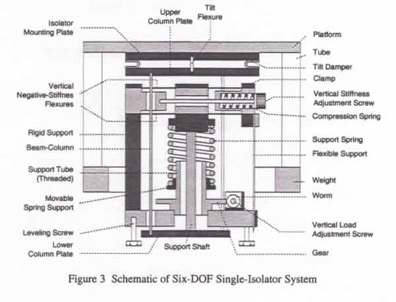Submarine Modernization: On 4 July 2004, USS VIRGINIA (SSN 774) joined the Fleet. She is 377 feet in length, 34 feet in the beam, has a draft of 30.5 feet at the designer’s waterline, DWL, and displaces 7800 dwt submerged. She is designed with Berthing and Messing to accommodate 14 officers and a crew of […]
 Submarine Modernization:
Submarine Modernization: On 4 July 2004, USS VIRGINIA (SSN 774) joined the Fleet. She is 377 feet in length, 34 feet in the beam, has a draft of 30.5 feet at the designer’s waterline,
DWL, and displaces 7800 dwt submerged. She is designed with
Berthing and Messing to accommodate 14 officers and a crew of 120.
VIRGINIA’s Length-to-Breadth
, L/B, ratio of 11.09 is comparable to the 11.0 for
LOS ANGELES Class submarines with a 33-foot beam, and is somewhat more than
SEAWOLF’s 8.4 with a 42-foot beam, but a little less than
OHIO’s 13.3 also with a 42-foot beam.
Note that the US Navy officially will neither confirm nor deny any US submarine’s speed except to be greater than 20 knots, and a test-depth greater than 400 feet.
The wall-thickness and diameter of
VIRGINIA’s cold-rolled, HY-120 steel inner pressure hull, with scrupulously designed hull-penetrations and conscientious seam-welds, allows submarine design engineers to impose a safe-diving test-depth of 1600 feet, according to the open literature. Her design for a reduced number of needed hull-penetration features eight non-hull penetrating antennae packages.
VIRGINIA is powered by a S9G PWR, a
Pressurized Water Reactor, made by General Electric that will not require re-coring for the life of the ship. Her propulsion plant is rated at 40,000 SHP for a single shaft with a maximum rated submerged speed of 34 knots, according to the open literature. She is designed with
SEAWOLF-level acoustic quietness for stealth as well as acoustic tile cladding for active acoustic signal absorption.
VIRGINIA’s integral 9-man lock-out chamber can be used with the
Advanced SEAL Delivery System, ASDS, which is mini-submarine capable of “dry” delivery of a SEAL team. Moreover, the internal torpedo magazine space can be adapted to provide 2400 cubic feet of space for up to 40 SEAL team-members and their equipment.
VIRGINIA is capable of carrying and operating advanced
Unmanned Underwater Vehicles, UUV’s, wake-homing detection equipment, and a deployable active bi-static sonar source.
The bottom-line is that
VIRGINIA is an extremely capable submarine, and in the hands of a well-trained, experienced ship’s company skilled in the operational arts of submarine warfare, has an incisive ability for both deep ocean and shallow water operations
of all kinds— including
Anti-Submarine Warfare.
But, of all the technological advances of the 20
th century, electrical and electronic ones top my long list of amazing achievements. On my military-related list of amazing achievements, there are two technological advancements that stand-out to me. One is for the technological improvements in the electronic instruments for precise navigation, and the other is for the advances in military command-control-communications.
Navigation: The Art—and, the Science. Some 439 years after Magellan’s historic circumnavigation of the world on May 10, 1960,
USS TRITON (SSRN 586) completed the first
submerged circumnavigation of the world following Magellan’s route having sailed some 41,000 miles in eighty-four days.
Two years before,
NAUTILUS accomplished a historic navigational feat by transiting 1,830 miles submerged in four days from the Pacific to the Atlantic—and, in doing so, became the first ship to pass over the North Pole—
NAUTILUS 90-NORTH!
On July 20, 1960, while submerged off the coast of Cape Canaveral, Florida,
USS GEORGE WASHINGTON, with a self-contained navigational system for precise launch-position fixing fired two Polaris A-1 missiles that hit their respective bull’s eyes some 1200 miles down range, and then signaled: “FROM THE DEEP, POLARIS ON TARGET—RABORN.”
So, for comparison to these early strivings for more precise navigation on the open sea, consider the most sophisticated state-of-the art computer data processor now known, which precisely calculates the output of an absolutely ingenious arrangement of gyros and accelerometers that sense the slightest nano-scale movement: The
SINS,
Ship’s Inertial Navigation System.
But, in my biased opinion, at the top of the list are the technological advancements resident in the
Common Submarine Radio Room,
CSRR, for a US submarine to be in constant communication with its Submarine Operating Authority while
submerged at sea anywhere in the oceans of the world.
Communication: The Science—and, the Technology. For historical comparison of technological advances, note that the first nationally authorized submarine warship was not officially commissioned until 1900, while the first transatlantic radio-telegraph was not operational until 1901. Moreover, it was not until some fifteen years later on May 31, 1916, that the British Grand Fleet engaged the German’s High Seas Fleet in the Battle of Jutland in the North Sea just off the Danish Peninsula of Jutland.
A bold German Admiral, Reinhard Scheer, led the German Fleet out of Helgoland Bay, through which 20 years later would be the western approaches for the Kiel Canal. Admiral Scheer intended to break Britain’s blockade of Germany. British wireless-radio monitors, acting as communication-intercept operators, diligently alerted Admiral Sir John Jellicoe with their timely intercepts of German command messages that were directing naval activity at Wilhelmshaven.
Admiral Jellicoe immediately ordered the British Fleet to sea, and the battle was joined at sea about 80 miles west of Jutland. Rifled naval guns, 12” in diameter, fired 1000-pound projectiles with 400-pound powder charges that screamed at a muzzle velocity of about 1500 mph to strike targets over-the-horizon at a range of some 11 miles. Naval warfare for the 20
th century opened dramatically with the first act of “
Shock and Awe.”
Notwithstanding the advent of coal-powered, steam-engine driven, steel-framed and steel-clad
DREADNOUGHT battleships, fast cruisers, expendable destroyers,
et al, one of the most significant transpirations for naval warfare in WW-I, in my opinion, was the first use of radio-telegraphy communications
to all the ships at sea; and, its concomitant intelligence nemesis, COMINT– communication intercepts.
Militarists profess that the ability of the German Naval Command to communicate directly with U-boats at sea greatly enhanced their successes in both WW-I and WW-II.
And, so it is today.
The Common Submarine Radio Room, CSRR. VIRGINIA’s modern communication suite installed as a
CSRR is well-suited for the worldwide battle space of the 21
st century.
A modernized
Ship Self-Defense System, SSDS, will replace the
Advanced Combat Direction System, ACDS, in
VIRGINIA-Class upgrades.
All the software programs for the
CCSM, Command-Control System Module, in
VIRGINIA are compatible with the
Joint Military Command Information System, JMCIS. For instance, the AN-USC-38 EHF transceiver in
VIRGINIA has LINK-11 and NATO LINK-11 compatibly programmed for
JTIDS.
The AN/WSC-8,
Challenge Athena, houses a “Commercial Wide-Band Satellite Communication’s Program” to support the
Tomahawk, Submarine Launched Cruise Missile, SLCM, land-attack configuration.
The AN/USQ-123 (CDL-N),
Command Data Link, Navy, is used for receipt of signal-and-imagery intelligence data from remote sensors, and for the transmission that links sensor-control data to/from airborne and submarine platforms.
The
Global Command & Control System, GCCS, is a multi-service information management system for maritime users that can display and disseminate data through an extensive array of common interfaces.
GCCS also is a multi-sensor data-fusion system for command analyses and decision-making. Thus, in the main, it is utilized for overall force-coordination.
The
Ocean Surveillance Information System, OSIS, receives, processes, displays, and disseminates joint-service information regarding fixed and mobile targets on land and at sea.
The
Multi-Level Security System, MLS, also known as “
Radiant Mercury,” among other things
MLS automatically sanitizes highly classified data, and then re-issues it as SI-GENSER RELEASABLE to “Shooters” while still protecting
sources and methods, national sensitivities, and foreign release-ability of the tactical picture.
The innovative design of the upgraded
Automated Digital Network System encompasses all RF circuits for routing/switching of both strategic and tactical
C4I, Command-Control-Communication-Computer Information, with
TCP/ICP, Transmission Control Protocol/ Internet Control Protocol, thereby linking Battle Group units with each other and with the
DISN, Digital Information System Network.
The
ADNS now has 224 ship-based units, and four shore-based sites. Network operation centers are linked to three
Naval Computer and Telecommunication Area Master Stations plus one in the
Persian Gulf at Bahrain. Whereas, the
Global Broadcast Service, GBS, is the follow-on for US Navy UHF radio communication via satellite. By 2009, the
Advanced Wideband System, AWS, will be the communication upgrade for all US submarines and surface ships, and a version planned for US aircraft installation is under study.
Submarine Tasking. So, what are submarines task to do?
Primer: Submarines Sink Ships!
Second to that, submarines can hunt and kill other opposing submarines in the medium with them. In more poignant warfare scenarios, submarines can be tasked to mine sea-lane choke points as well as enemy harbors. Moreover, pursuant to mission accomplishment in support of national policies, and in particular for a duly delineated national armed-force objective to “Project National Power,” submarines can launch land-attack missiles from international waters, as directed by the
National Command Authority,
NCA– acting
unilaterally.
In addition, submarines can be tasked to conduct surveillance and reconnaissance operations inside and outside the battle space, covertly. In that same vein, submarines can be tasked to insert, and, or retract Special Operating Forces on the shores of the world’s ocean-littoral– covertly.
For deployments, submarines provide indirect, associated, and direct Battle Group support.
Time-On-Station for modern nuclear-powered submarines is dependent only on the amount of food they have to feed their crew—like 90 days without replenishment.
Note, after 60 days, dreams of a real milk-shake, and a … become more frequent, seemingly with an exponentially increasing persistency.
As a precursor for a discussion on submarine weapons, consider the following “insider” information about sensing an acoustic event—as heard from each side. The sound of flooding a torpedo tube with a weapon in it is a distinguishable acoustic event. In an analogy to
Blind Man’s Bluff, this is the sound-equivalent of the sight of a pistol being drawn from its holster. Likewise, hearing a torpedo tube’s outer door open is analogous to seeing a pistol’s hammer being cocked. Doubtless, these are distinctive sounds that are instinctive indicators that you are engaged in mortal combat, a fight—a gunfight.
Note that at sea, water from below, like water from above, wets both teams.
Submarine Weapons. The Mark-48 Mod-6,
Advanced Capability, ADCAP, Heavyweight (heavier than the water it displaces) Acoustic-Homing Torpedo, is an automated marvel of essentially an unmanned underwater vehicle that delivers an explosive charge as a very “numbing sting.”
The ADCAP is self-propelled by an axial-flow, pump-jet propulsion system driven by an external combustion, gas-piston engine fuel-fired by a mono-propellant,
Otto Fuel II. There are two run-speed selections: LOW, for 40 knots and a range of 50 km; and, HIGH, for 55 knots and a range of 38 km. The MK-48 is 228” in length and 21” in diameter weighing in at 3527 pounds, which is about 600 pounds
heavier than the sea-water its volume displaces. Its warhead is 590-lb of High Explosive, with a 1.5 multiplying factor for its TNT-equivalent.
Note, from the perspective of the target, sensing this torpedo coming at you is analogous to you finding yourself driving precariously on an icy road in the middle of nowhere, and then alarmingly you sight through your driver’s-side window a pick-up truck barreling down on you at about 63 mph– loaded with 900 sticks of dynamite.
From this visual input, you analytically conclude that you have less than a minute in these icy conditions to think and act to avoid collision—and thus, realize that the only thing you have time to do is bend over and kiss yourself good-bye.
The submarine-launched
Tomahawk Land-Attack Missile, TLAM, has a range of 900 km with a 1000-pound High Explosive warhead. With a
Terrain Contour Matching Aided Internal Navigation System, TAINS, its circular-error probable, CEP, is inside 10m for 50% of its shot-trials—like in through your front-room’s window instead of knocking on the front-door.
Submarine Combat System. VIRGINIA’s combat system is a suite of very high-tech devices that each satisfy a
Mission Essential Need. The suite has devices designed to sense danger—and opportunity. These devices are a very effective set of acoustic sensors. There is a reel-able linear towed array sonar, and a thin-line array—
TB-16 and TB-29. Just inside the thin-skinned acoustic “window” of the outer hull around the bow is a very sophisticated, state-of-the-art active/passive spherical sonar array, AN-BQQ-5E. In addition, there are wide-aperture flank-mounted passive arrays, AN-BQG-5D; a keel-and-fin-mounted high sonic frequency active sonar for under-the-ice ranging and maneuvering as well as for mine detection and avoidance; a medium sonic frequency active sonar for target ranging; a sonar sensor for intercept of active-ranging signals from an attacking torpedo; and, a self-noise acoustic monitoring system. Moreover, all acoustic systems have advanced signal processors– replete with programmed algorithms for beam-forming.
Electronic System Measures, ESM, include the AN-BRD-7F
Radio Direction Finder; the electronic signal monitors, AN-WLR-1H, and AN-WLR-8(V) 2/6.
The
ESM suite also includes AN-WSQ-5 and AN-BLD-1
Radio Frequency Intercept Periscope-Mounted Devices, AN-WLQ-4(V) 1, AN-WLR-10, and AN-BLQ-10
Radar Warning Devices. Active electro-magnetic devices in this suite are the AN-BPS-15A and BPS-16 are I- and J-Band navigational piloting radar respectively with a waveguide mounted in a retractable mast, and a waveguide mounted in a periscope.
The
Combat Data System, CDS MK-2, has an AN-UYK-7 computer-data processing unit. IBM’s AN-BSY-2 is a re-designed combat system from the decade-earlier one in
SEAWOLF. VIRGINIA’s “Busy-Two”
is reprogrammed with 2.2-million lines of ADA code loaded in some 200
Data Processors, AN-UYK-43’s and UYK-44’s.

This
CDS manages input from an integrated digital upgrade of the AN-UYS-2
Acoustic Signal Processors with their
Expanded Directional Frequency Analysis and Recording System.
The
Torpedo Fire Control System, TFCS, is on a high-speed data bus with a distributed architecture for redundancy.
The
TFCS is programmed with advanced algorithms for
Target Motion Analysis, TMA, and is operated from multi-function consoles that also are used for information management.
Target Motion Analysis—the Relative Motion Triangle:
 A Bearing versus Time
A Bearing versus Time
 Plot—to determine Bearing-Rate.
Plot—to determine Bearing-Rate.
 TFCS Stick Diagrams– in the minds of submarine officers.
TFCS Stick Diagrams– in the minds of submarine officers.
Shallow water is an anathema for submariners because submarines on the surface are exceptionally vulnerable. Thus, it is said that the best place to sink a submarine is while it is in port. Does that mean that
VIRGINIA cannot operate effectively in shallow water? Absolutely not! Are
VIRGINIA’s submarine officers aware of the “shallow water” effects when operating within 238 feet of the bottom—seven times the “height” of her displaced volume– and, by geometry, when in 125 feet of water, a 20-degree diving angle will result in “kissing” the bottom? Of course, they are—we bought them books, and sent them to school. In a deadly analogy, be aware that a shark can attack you as you wade in shallow water. Sic ‘em, ‘
Ginia!
Another disconcerting imprecation to submariners is hearing the “pings” of active sonar followed by the shrill of small, high-speed, super-cavitations screws, which are the distinctive sounds of an acoustic torpedo running to …
ruin your entire day.
French author Jules Verne, 1828-1905, entertained us with exciting tales of undersea adventure featuring his fictional submarine
Nautilus in his book “
20,000 Leagues Under the Sea.” Notably, our
USS NAUTILUS (SSN 571) logged much more than 80,000 nm—20,000 leagues—under the sea before her first re-coring; and,
VIRGINIA will log over 125,000 leagues of submerged steaming in her service life,
without refueling.
The nuclear-powered submarine is a far-ranging, very effective, versatile warship for the 21
st century—and, the
Projection of National Power only requires unilateral action by our
NCA. Seemingly,
We, the People, still hold some
Truths to be self-evident …that
among these are Life, Liberty, and the Pursuit of …
all those that threaten us. Our battle flag once warned, as did our Navy Jack for a year in 1976:
Don’t Tread On Me!
The Threat: The Enemy Below— A German Type 214 AIP Submarine.

The Type 214 is 213 feet in length with a submerged displacement of 1860 dwt. They are equipped with two 120-kW Siemens
AIP,
Air-Independent Propulsion, fuel-cell power units, as well as two 1,000-kW diesel generator sets.
The first of four Type 214 submarines for the Greek Navy, the
Papanikolis, is pictured above just after delivery and christening at
Howaldtswerke Deutsche Werft (HDW), Kiel, on 22 April 2004. The
Papanikolis will be followed by three sisters on order from HDW’s subsidiary Hellenic Shipyard at Skaramanga, Greece, namely, the
Pipinos, Matrozos, and
Katsonis. The
Pipinos is planned to complete in September 2005. Currently, three of Greece’s four German Type 209/1200 submarines also are being back-fitted with fuel-cell AIP during refits ordered in June 2002.
Portugal ordered two German Type 209-PN submarines on 21 April 2004. These submarines too will have Siemens AIP systems installed as well as their original diesel-electric generator sets. The first of these is to be delivered in 2009, and the second a year later. Both are estimated to bill at $490-million each. Apparently, the pair is intended to replace two vintage-1960 French-made
Daphne Class
boats, which are to be retired in 2006.
In mid-July 2004, a photograph of a submarine underway on its own power standing out from China’s Wuhan shipyard—some 420 miles inland from Shanghai—was posted on a Chinese Internet site. The following is a paraphrasing of an article published in
The Washington Times as written by Bill Gertz on July 16, 2004.
Reportedly, a US DOD official confirmed that the photographed submarine is the lead ship of China’s new YUAN-Class submarine. Its design can be categorized as a combination of indigenous Chinese hardware and Russian weapons.
The PRC’s public exposure of this new class of submarine leads some US defense analysts to opine that China may be building up its naval forces in preparation for an armed confrontation with the US-supported ROC on Taiwan.
These US analysts suggest that Chinese militarists may have decided that submarines are the PRC’s first-line of warships for defying US aircraft carriers.
Moreover, China also is building two nuclear-powered submarines—one Type 093 fast-attack submarine similar to the Russian VICTOR-III Class, and one Type 094 intercontinental ballistic missile submarine—which should be ready for deployment next year.
It is believed that in the coming months the US will continue to strengthen naval forces in the Pacific by the forward deployment of up to six additional nuclear-powered submarines to Guam, and an aircraft carrier naval battler group to the South China.
Unlike the quotes attributed to Mister Richard Fisher, the outspoken former White-House advisor and now billed as a “Specialist” on the Chinese military, my take is more like one from a warfare realist:
In God We Trust
But We Track All Others!

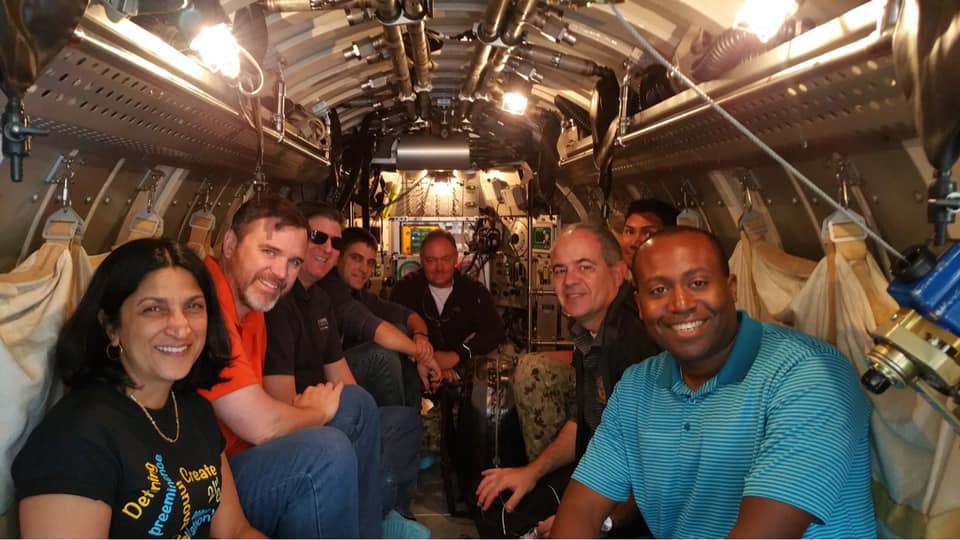

 The majority of the information comes from satellites that infer the shape of the ocean bottom from the shape of the water surface above. However, satellite are not flying a mission specifically dedicated to the task of mapping the ocean floor. A mission like that is estimated to cost $100m and none of the governments are willing to commit to this endeavor. We know more about the surface of Saturn of Jupiter than our own waters. The best way to map the ocean floor is through a modern swath-mapping echosounder system. It would take 20 dedicated ships 10 years to complete this task. This could be achieved for about $3bn. It sounds like a lot but a lot of disasters could be avoided. Think of the nuclear submarine USS San Francisco that crashed into a seamount in 2005.
The majority of the information comes from satellites that infer the shape of the ocean bottom from the shape of the water surface above. However, satellite are not flying a mission specifically dedicated to the task of mapping the ocean floor. A mission like that is estimated to cost $100m and none of the governments are willing to commit to this endeavor. We know more about the surface of Saturn of Jupiter than our own waters. The best way to map the ocean floor is through a modern swath-mapping echosounder system. It would take 20 dedicated ships 10 years to complete this task. This could be achieved for about $3bn. It sounds like a lot but a lot of disasters could be avoided. Think of the nuclear submarine USS San Francisco that crashed into a seamount in 2005.

 The mystery of the missing Malaysia Airline flight MH370 is closer to being solved as authorities have revealed that they have tracked the final unexplained signal emitted by the jet, to the same point in the Indian Ocean, where the jet was believed to have crashed. Time will tell whether this is a definitive lead or a false alarm. We all hope it is the beginning to a successful answer.
Calling the latest development a promising lead, retired Air Chief Marshal Angus Houston, who is leading the search, said that an Australian navy ship had detected two sets of pulse signals that sounded just like an emergency locator beacon.
While the first set was heard on Saturday and lasted for two hours and 20 minutes, the Ocean Shield ship then lost contact with the “pings” but turned around and later heard further signals for 13 minutes, the Sydney Morning Herald reported.
However, the ship lost contact again and has been trying to relocate the signals.
Houston said that in the search so far it is probably the best information that the team has had, adding that the search team is encouraged that it is very close to where it needs to be.
He added that he would want more confirmation before he could say ‘this is it’.
Here is a list of the equipment that is being employed by the searchers.
If you find this information useful, please mention
The mystery of the missing Malaysia Airline flight MH370 is closer to being solved as authorities have revealed that they have tracked the final unexplained signal emitted by the jet, to the same point in the Indian Ocean, where the jet was believed to have crashed. Time will tell whether this is a definitive lead or a false alarm. We all hope it is the beginning to a successful answer.
Calling the latest development a promising lead, retired Air Chief Marshal Angus Houston, who is leading the search, said that an Australian navy ship had detected two sets of pulse signals that sounded just like an emergency locator beacon.
While the first set was heard on Saturday and lasted for two hours and 20 minutes, the Ocean Shield ship then lost contact with the “pings” but turned around and later heard further signals for 13 minutes, the Sydney Morning Herald reported.
However, the ship lost contact again and has been trying to relocate the signals.
Houston said that in the search so far it is probably the best information that the team has had, adding that the search team is encouraged that it is very close to where it needs to be.
He added that he would want more confirmation before he could say ‘this is it’.
Here is a list of the equipment that is being employed by the searchers.
If you find this information useful, please mention
 U.S. Navy-trained dolphins and sea lions have helped detect and disable underwater mines for decades. But a growing swarm of robots will allow the Navy’s squads of sea mammals to begin retiring by 2017, the Navy says.
The sea mammals have used their natural sonar or low-light vision to help detect mine threats and even call out enemy divers since the 1960s — dolphins in particular helped mark mines during the Persian Gulf War and Iraq War. Their exemplary service is drawing to a close as the Navy turns to a growing fleet of cheaper robots to do the job.
Navy-trained sea mammals underwent different types of training depending on their capabilities. For instance, dolphins used their biological sonar to detect the location of sea mines so that they could report back to human handlers with yes or no responses. They could also mark mine locations with buoy lines, or even prepare to disable the mines by attaching explosive charges to them.
The impending retirement of the Navy’s sea mammals is part of the broader trend of the U.S. military using robots. Navy efforts include testing robot boats armed with missiles and experimenting with its large X-47B drone capable of taking off from the decks of aircraft carriers.
U.S. Navy-trained dolphins and sea lions have helped detect and disable underwater mines for decades. But a growing swarm of robots will allow the Navy’s squads of sea mammals to begin retiring by 2017, the Navy says.
The sea mammals have used their natural sonar or low-light vision to help detect mine threats and even call out enemy divers since the 1960s — dolphins in particular helped mark mines during the Persian Gulf War and Iraq War. Their exemplary service is drawing to a close as the Navy turns to a growing fleet of cheaper robots to do the job.
Navy-trained sea mammals underwent different types of training depending on their capabilities. For instance, dolphins used their biological sonar to detect the location of sea mines so that they could report back to human handlers with yes or no responses. They could also mark mine locations with buoy lines, or even prepare to disable the mines by attaching explosive charges to them.
The impending retirement of the Navy’s sea mammals is part of the broader trend of the U.S. military using robots. Navy efforts include testing robot boats armed with missiles and experimenting with its large X-47B drone capable of taking off from the decks of aircraft carriers.
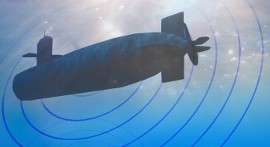 Video Clip:
Video Clip: 
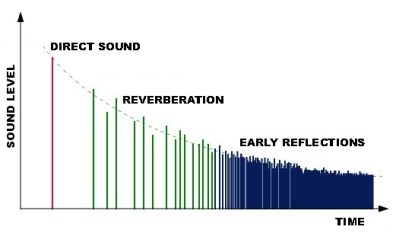
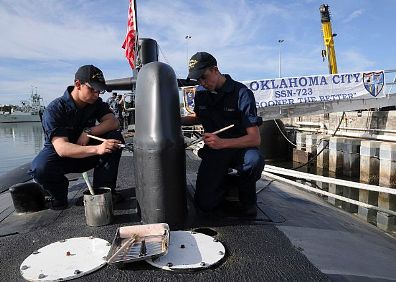
 Submarine Modernization
Submarine Modernization This CDS manages input from an integrated digital upgrade of the AN-UYS-2 Acoustic Signal Processors with their Expanded Directional Frequency Analysis and Recording System.
The Torpedo Fire Control System, TFCS, is on a high-speed data bus with a distributed architecture for redundancy.
The TFCS is programmed with advanced algorithms for Target Motion Analysis, TMA, and is operated from multi-function consoles that also are used for information management.
This CDS manages input from an integrated digital upgrade of the AN-UYS-2 Acoustic Signal Processors with their Expanded Directional Frequency Analysis and Recording System.
The Torpedo Fire Control System, TFCS, is on a high-speed data bus with a distributed architecture for redundancy.
The TFCS is programmed with advanced algorithms for Target Motion Analysis, TMA, and is operated from multi-function consoles that also are used for information management.

 Plot—to determine Bearing-Rate.
Plot—to determine Bearing-Rate.
 The Type 214 is 213 feet in length with a submerged displacement of 1860 dwt. They are equipped with two 120-kW Siemens AIP, Air-Independent Propulsion, fuel-cell power units, as well as two 1,000-kW diesel generator sets.
The first of four Type 214 submarines for the Greek Navy, the Papanikolis, is pictured above just after delivery and christening at Howaldtswerke Deutsche Werft (HDW), Kiel, on 22 April 2004. The Papanikolis will be followed by three sisters on order from HDW’s subsidiary Hellenic Shipyard at Skaramanga, Greece, namely, the Pipinos, Matrozos, and Katsonis. The Pipinos is planned to complete in September 2005. Currently, three of Greece’s four German Type 209/1200 submarines also are being back-fitted with fuel-cell AIP during refits ordered in June 2002.
Portugal ordered two German Type 209-PN submarines on 21 April 2004. These submarines too will have Siemens AIP systems installed as well as their original diesel-electric generator sets. The first of these is to be delivered in 2009, and the second a year later. Both are estimated to bill at $490-million each. Apparently, the pair is intended to replace two vintage-1960 French-made Daphne Class boats, which are to be retired in 2006.
In mid-July 2004, a photograph of a submarine underway on its own power standing out from China’s Wuhan shipyard—some 420 miles inland from Shanghai—was posted on a Chinese Internet site. The following is a paraphrasing of an article published in The Washington Times as written by Bill Gertz on July 16, 2004.
Reportedly, a US DOD official confirmed that the photographed submarine is the lead ship of China’s new YUAN-Class submarine. Its design can be categorized as a combination of indigenous Chinese hardware and Russian weapons.
The PRC’s public exposure of this new class of submarine leads some US defense analysts to opine that China may be building up its naval forces in preparation for an armed confrontation with the US-supported ROC on Taiwan.
These US analysts suggest that Chinese militarists may have decided that submarines are the PRC’s first-line of warships for defying US aircraft carriers.
Moreover, China also is building two nuclear-powered submarines—one Type 093 fast-attack submarine similar to the Russian VICTOR-III Class, and one Type 094 intercontinental ballistic missile submarine—which should be ready for deployment next year.
It is believed that in the coming months the US will continue to strengthen naval forces in the Pacific by the forward deployment of up to six additional nuclear-powered submarines to Guam, and an aircraft carrier naval battler group to the South China.
Unlike the quotes attributed to Mister Richard Fisher, the outspoken former White-House advisor and now billed as a “Specialist” on the Chinese military, my take is more like one from a warfare realist:
In God We Trust
The Type 214 is 213 feet in length with a submerged displacement of 1860 dwt. They are equipped with two 120-kW Siemens AIP, Air-Independent Propulsion, fuel-cell power units, as well as two 1,000-kW diesel generator sets.
The first of four Type 214 submarines for the Greek Navy, the Papanikolis, is pictured above just after delivery and christening at Howaldtswerke Deutsche Werft (HDW), Kiel, on 22 April 2004. The Papanikolis will be followed by three sisters on order from HDW’s subsidiary Hellenic Shipyard at Skaramanga, Greece, namely, the Pipinos, Matrozos, and Katsonis. The Pipinos is planned to complete in September 2005. Currently, three of Greece’s four German Type 209/1200 submarines also are being back-fitted with fuel-cell AIP during refits ordered in June 2002.
Portugal ordered two German Type 209-PN submarines on 21 April 2004. These submarines too will have Siemens AIP systems installed as well as their original diesel-electric generator sets. The first of these is to be delivered in 2009, and the second a year later. Both are estimated to bill at $490-million each. Apparently, the pair is intended to replace two vintage-1960 French-made Daphne Class boats, which are to be retired in 2006.
In mid-July 2004, a photograph of a submarine underway on its own power standing out from China’s Wuhan shipyard—some 420 miles inland from Shanghai—was posted on a Chinese Internet site. The following is a paraphrasing of an article published in The Washington Times as written by Bill Gertz on July 16, 2004.
Reportedly, a US DOD official confirmed that the photographed submarine is the lead ship of China’s new YUAN-Class submarine. Its design can be categorized as a combination of indigenous Chinese hardware and Russian weapons.
The PRC’s public exposure of this new class of submarine leads some US defense analysts to opine that China may be building up its naval forces in preparation for an armed confrontation with the US-supported ROC on Taiwan.
These US analysts suggest that Chinese militarists may have decided that submarines are the PRC’s first-line of warships for defying US aircraft carriers.
Moreover, China also is building two nuclear-powered submarines—one Type 093 fast-attack submarine similar to the Russian VICTOR-III Class, and one Type 094 intercontinental ballistic missile submarine—which should be ready for deployment next year.
It is believed that in the coming months the US will continue to strengthen naval forces in the Pacific by the forward deployment of up to six additional nuclear-powered submarines to Guam, and an aircraft carrier naval battler group to the South China.
Unlike the quotes attributed to Mister Richard Fisher, the outspoken former White-House advisor and now billed as a “Specialist” on the Chinese military, my take is more like one from a warfare realist:
In God We Trust

